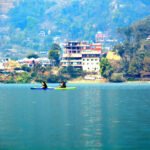Sri Lanka, formerly known as Ceylon, is an island nation in South Asia, located in the Indian Ocean southeast of India, close to the equator. Zheng He visited here during his voyages, and Marco Polo praised it as a stunning island in his travel accounts. Even in “One Thousand and One Nights,” Sinbad the Sailor made two treasure hunts to Sri Lanka. Unlike many commercialized Southeast Asian tourist destinations, Sri Lanka, known as the “teardrop of the Indian Ocean,” still retains the simplicity of island life.
It’s not your typical island. With an area of over 60,000 square kilometers—about twice the size of Hainan Island—it offers not just pristine and romantic beaches but also a wealth of cultural and historical sites. Here, you’ll find religious devotion, charming seaside trains, exciting safaris in Yala, and eight UNESCO World Heritage sites like Sigiriya Rock and Galle Fort. There’s also the cultural vibe of Negombo Fish Market and luxurious hotels converted from old royal palaces. Whether you’re traveling with friends, partners, family, or with kids, you’ll find a way to enjoy your trip.
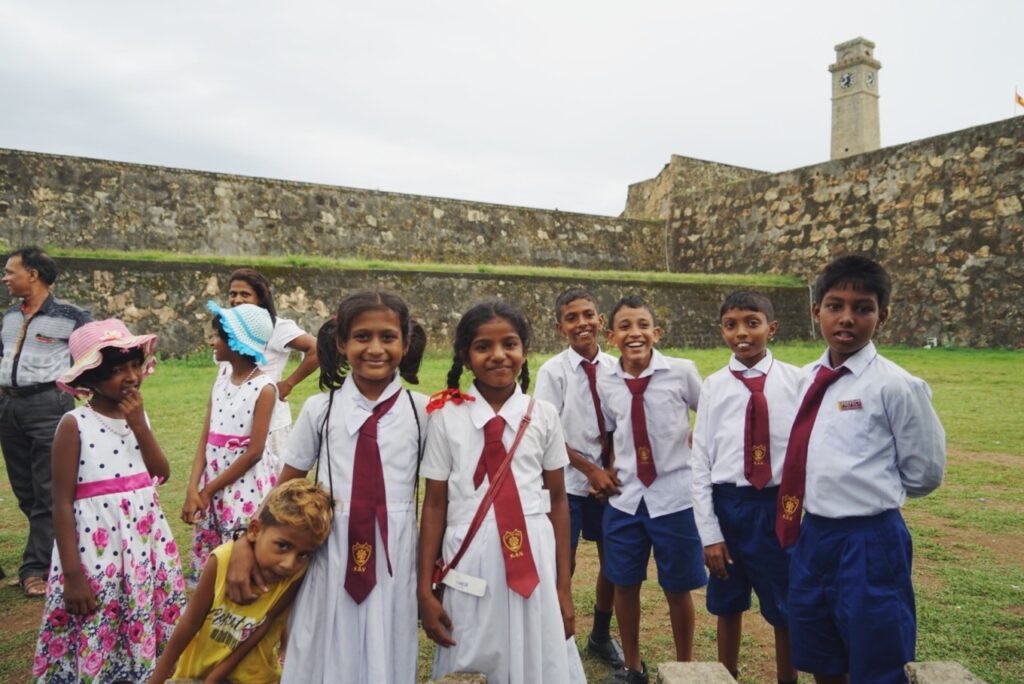
Negombo Fish Market
Hours: Monday to Friday.
Negombo is a port city on the western coast of Sri Lanka, located on the northern shore of Negombo Lagoon, about 30 kilometers north of Colombo. With remnants of 17th-century Dutch architecture, this important fishing port is famous for its fish market. The market is well-known for its abundant and inexpensive seafood, including shrimp, crabs, and fish. Visitors often flock here to experience local life or to buy fresh seafood for cooking.
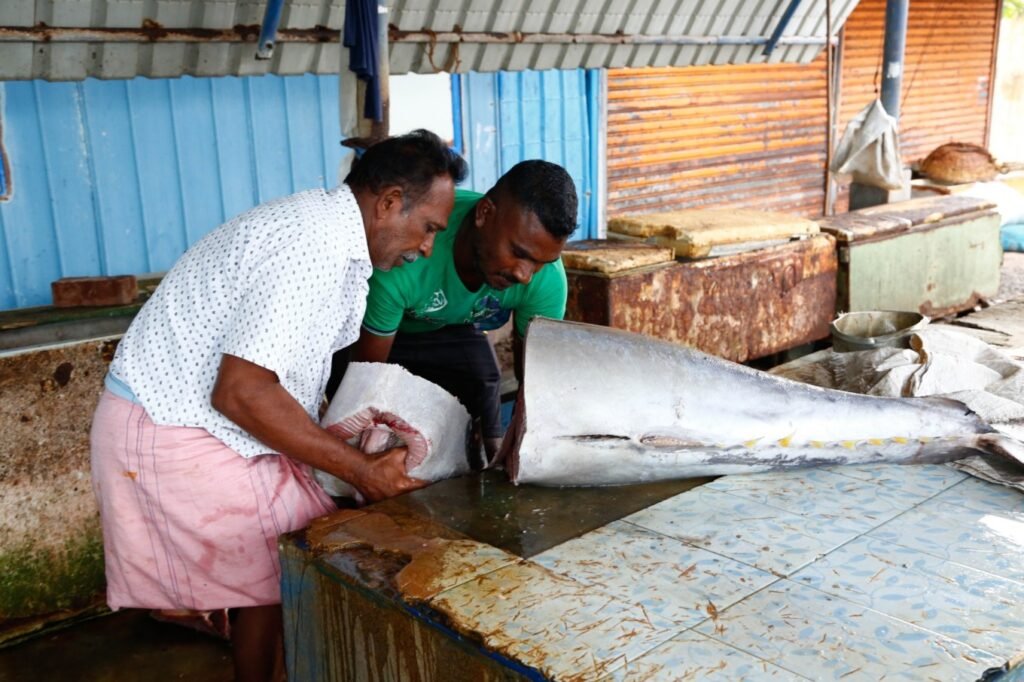
Every morning, local fishermen head out to catch fish and return to sell their catch, creating their own daily routine. When I visited, I was a bit late, and most vendors had already packed up, leaving behind various fish entrails and unwanted parts. This turned the area into a haven for crows and other seabirds. If you have enough time in Negombo, it’s worth going to the fish market early, haggling with the locals, and buying some fish to take back to your hotel to have it steamed.
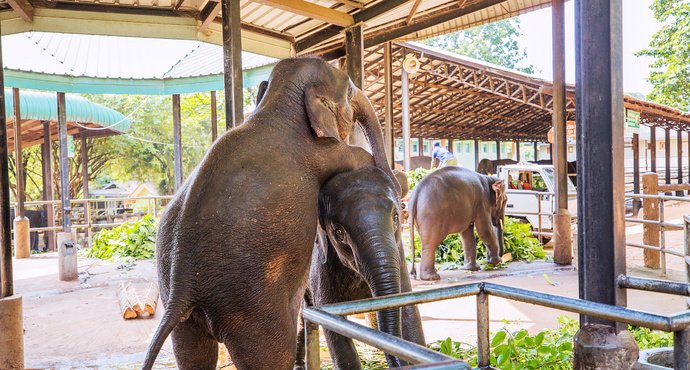
Elephant Orphanage
Admission: 2500 rupees per person
There are currently two elephant orphanages in the world, located in Sri Lanka and Kenya. In 1975, Sri Lanka’s Department of Wildlife established the world’s first elephant orphanage to care for homeless baby elephants. The orphanage primarily takes in elephants that are orphaned, injured by traps, lost from their herds, wounded by conflict, or ill.
As this elephant orphanage in Sri Lanka has become a popular tourist attraction, a local paper company has also started processing piles of elephant dung into paper, known as “elephant dung paper,” which is sold overseas.
At the entrance of the elephant orphanage, we were about to buy tickets when the administrator informed us that the elephants follow a strict daily routine—waking up, eating, bathing, and sleeping all happen at precise times. During our visit, the elephants had already gone into the forest, and there were none left in the viewing area. The administrator kindly suggested we reconsider going in, and we appreciated his thoughtfulness, so we decided not to enter.
While traveling in Sri Lanka, you may occasionally encounter snake charmers, and we came across one right across from the elephant orphanage. He played melodies on a flute, and the cobra in the basket responded by raising its head, inflating its hood, and swaying side to side as if dancing to the music. These snake charmers are street performers who rely on their craft to make a living, using snake dancing to support themselves.
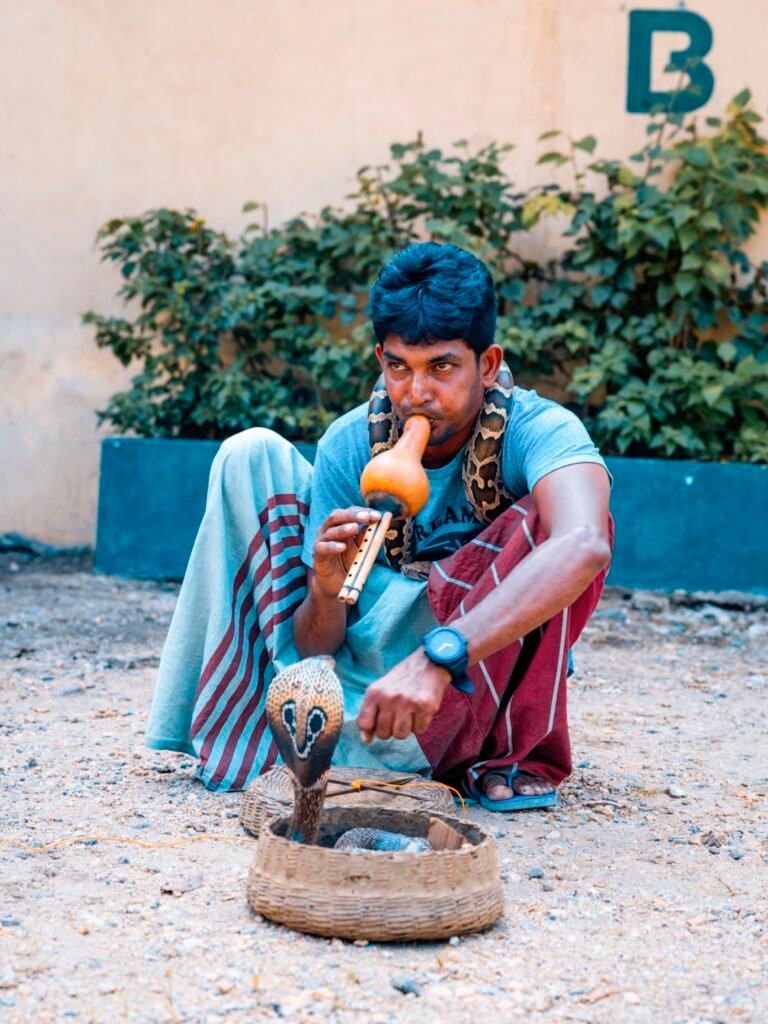
Since ancient times, Sri Lanka has had a tradition of snake charmers performing with snakes. They catch snakes in forests or homes, extract their venom, and place them in wooden baskets to perform in public for money. The Telugu people of Sri Lanka used to appear in rural areas, but their population is now very small. These Telugu people trace their origins back to the Telugu-speaking regions of South India centuries ago. They are commonly referred to as Sri Lankan Gypsies in English, Ahikuntaka in Sinhalese, and Kuravar in Tamil.
India has long been intertwined with snake-related stories. During British rule in India, cobra bites were a frequent problem. In an effort to eradicate the snakes, the government issued a bounty for every snake caught. However, to the government’s surprise, instead of decreasing, the snake population increased. The reason? To earn more rewards, Indians began breeding the cobras they caught. With more snakes at their disposal, they could exchange them for more money. Eventually, the British government had to cancel the bounty program.
Anuradhapura: The Land of Light and Prosperity
Located 200 kilometers north of Colombo, the city of Anuradhapura boasts a history spanning nearly 3,000 years. It served as the capital of the Sinhalese Kingdom until the 10th century AD and was once the political and religious center of the dynasty, flourishing in its time. However, due to repeated foreign invasions, the sacred city was abandoned and lay forgotten until it was rediscovered during the British colonial era in the 19th century.
Today, several hemispherical stupas hidden within the jungle stand as ancient symbols of Anuradhapura, quietly narrating the glory of the once-great city. The Sinhalese people are the predominant ethnic group in Sri Lanka. In the Sinhalese language, the name “Sri Lanka” translates to “resplendent land” or “the land of light and prosperity.”
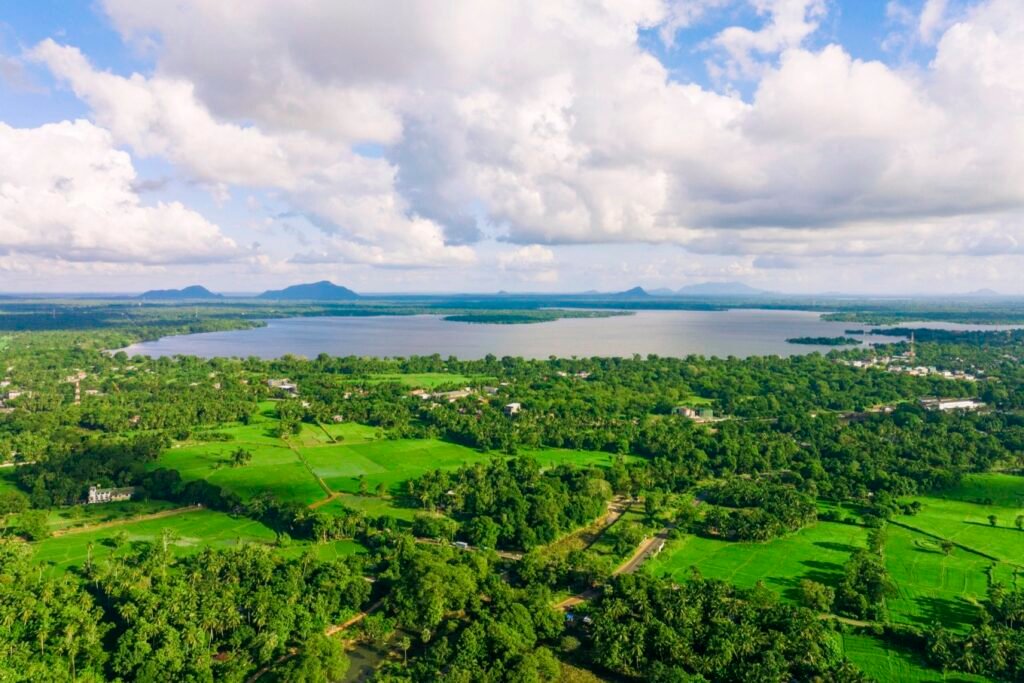
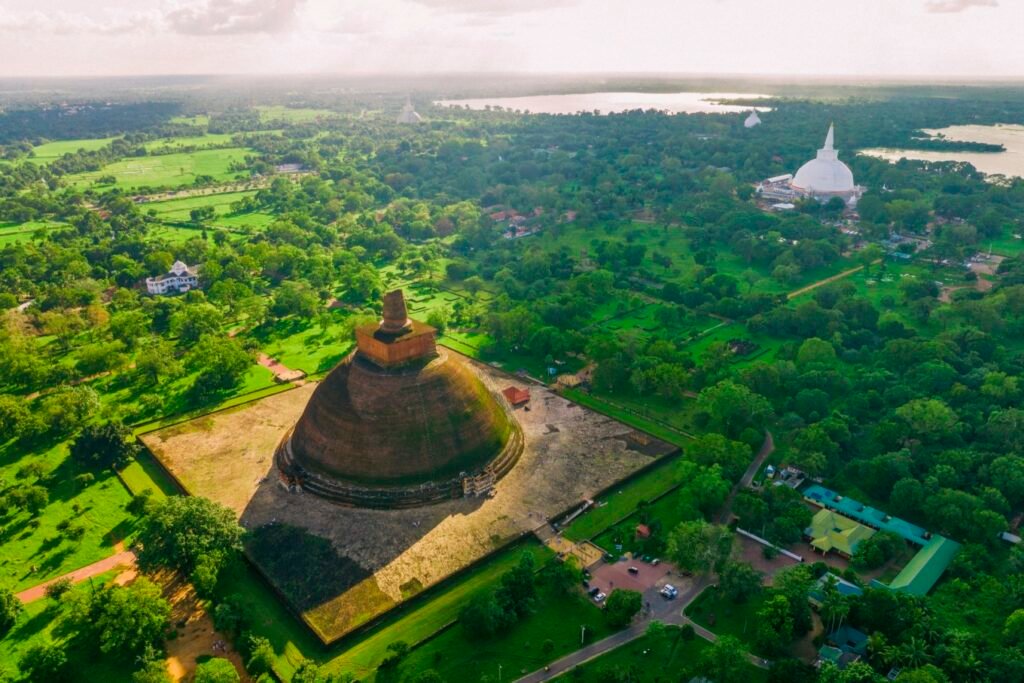
Sri Lanka has a long and rich history. As early as 2,500 years ago, Aryans from northern India migrated to the island of Ceylon and established the Sinhalese Kingdom. In 247 BC, Emperor Ashoka of the Maurya Empire in India sent his son to the island to promote Buddhism, which was warmly embraced by the local king. From that point on, the Sinhalese people abandoned Brahmanism and adopted Buddhism.
Around the 2nd century BC, Tamils from southern India also began migrating to and settling on the island. From the 5th to the 16th centuries, there were frequent conflicts between the Sinhalese Kingdom and the Tamil Kingdom. In the 16th century, Ceylon fell successively under the control of Portuguese, Dutch, and British colonizers, marking the beginning of 442 years of colonial rule. It wasn’t until 1948 that Sri Lanka finally gained independence.
Over more than two millennia of history, the Sinhalese people have created many valuable cultural treasures. Several of these sites have been inscribed on the UNESCO World Cultural and Natural Heritage List. The Cultural Triangle region is home to over a hundred historical sites, including palaces, Buddhist temples, stupas, Hindu temples, fortresses, gardens, cave temples, stone carvings, and murals. Among these, six sites were among the earliest to be included on UNESCO’s World Heritage List.
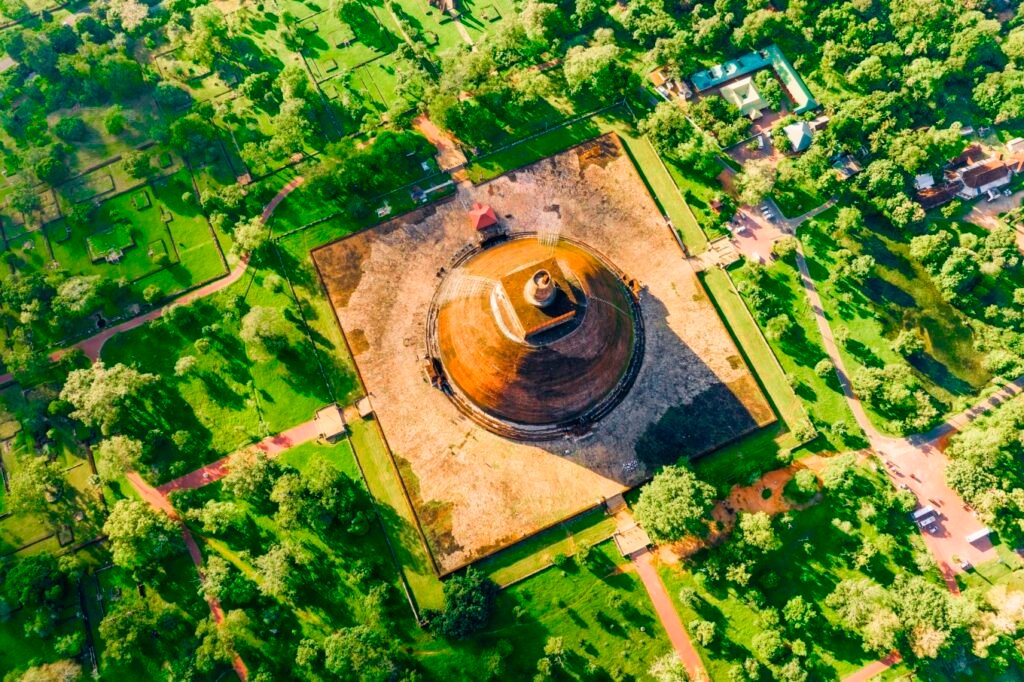
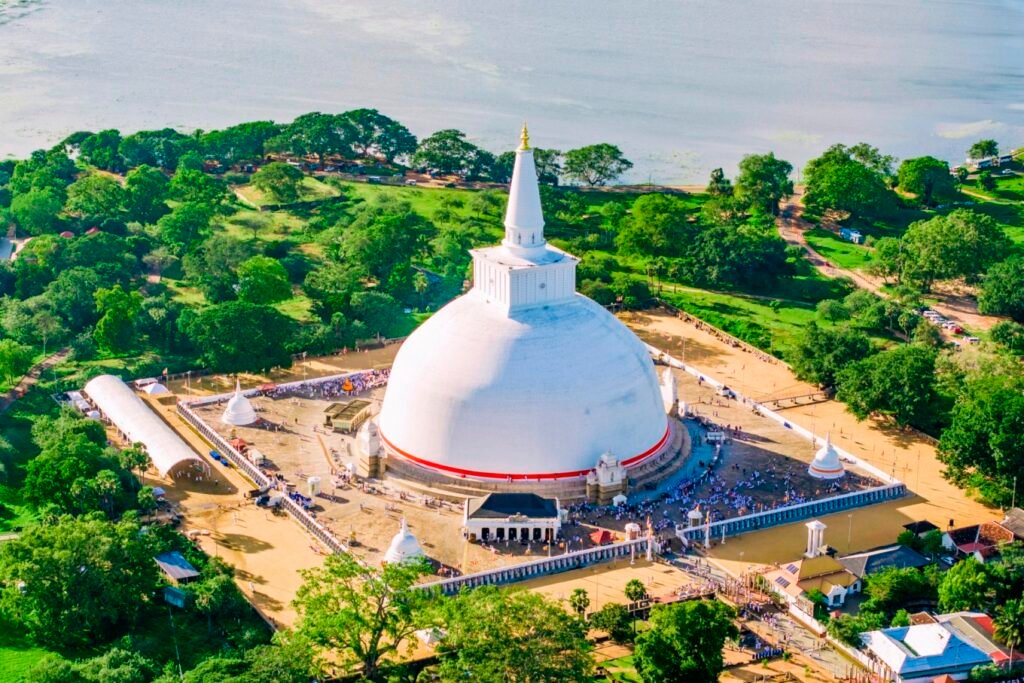
In fact, Sri Lanka is home to eight UNESCO World Heritage Sites. These include the Ancient City of Polonnaruwa, Sigiriya (Lion Rock), and the Ancient City of Anuradhapura, all recognized in 1982. Galle Fort, the Sacred City of Kandy, and the Sinharaja Forest Reserve were added in 1988. The Dambulla Golden Temple followed in 1991, and the Central Highlands of Sri Lanka were inscribed in 2010.
The ancient city of Anuradhapura is home to numerous historical landmarks. Among its most notable sites is a sacred Bodhi tree over 2,600 years old. Other key attractions include Brazen Palace, Ruwanwelisaya, Jetavanaramaya, Thuparamaya, and Abhayagiri Monastery. The city also features intricately carved twin ponds and a famous seated stone Buddha statue from the 4th century AD, standing over two meters tall. Anuradhapura is renowned for its ancient, sophisticated irrigation system, with remnants still visible today, including three ancient reservoirs. This makes me especially excited about the upcoming visit to the ancient city of Anuradhapura.
Ruwanwelisaya was built over 100 years before the Common Era. Standing 100 meters tall with a base diameter of 96 meters, this striking white structure is visible from a great distance. The stupa rests on a platform with three tiered bases. The lower part of the structure consists of a cubic brick core, with a central circular stone column that tapers into a conical shape. At the top, a gilded ornament crowns the stupa, making it a quintessential example of Sinhalese architecture. Not only does its size surpass that of all other stupas on the island, but it was also the largest of its kind among Buddhist countries at the time, earning it the title of the “Great Stupa.”
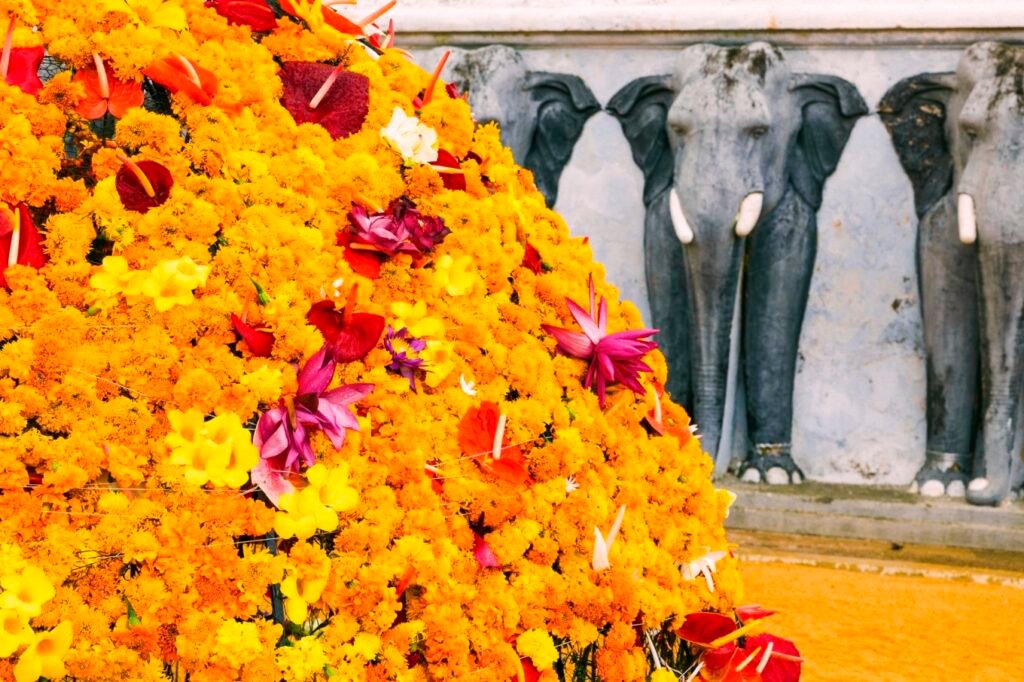
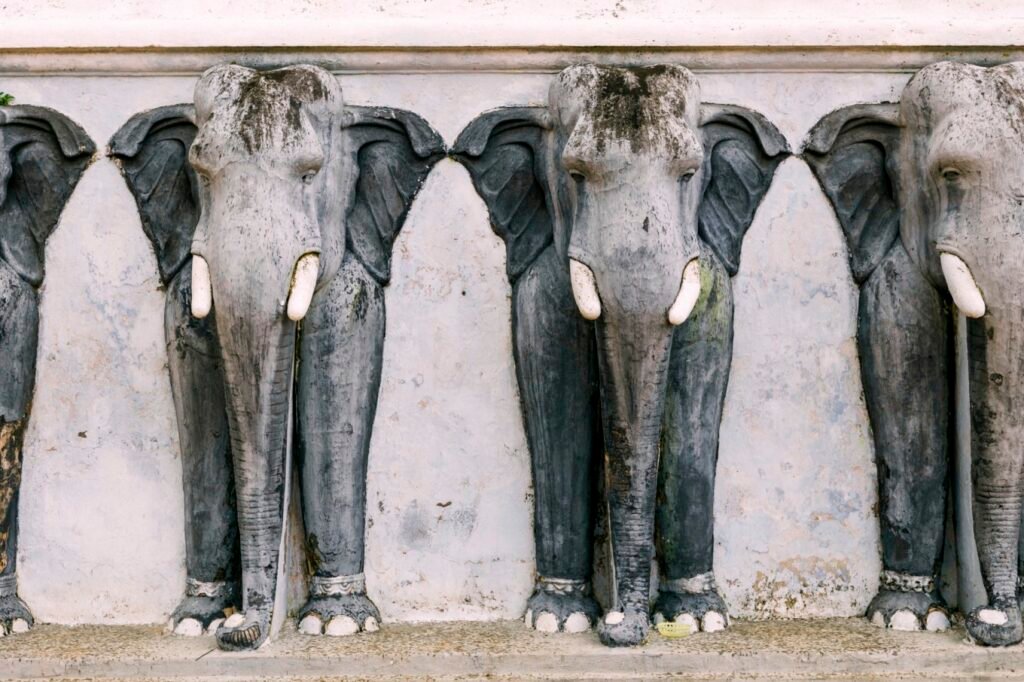
Ruwanwelisaya is the most well-preserved and vibrant stupa in the ancient city. Built in the 2nd century BCE, it is widely regarded as the most beautiful structure commissioned by King Dutugemunu, though unfortunately, he passed away before its completion. His son, Prince Saddhatissa, carried on his father’s mission and finally completed the Great Stupa. It is said that the stupa originally stood 110 meters tall, though its current height is only 55 meters.
Ruwanwelisaya was once more than just a stupa; it also represented a religious sect and housed a sizable monastery. Within the complex, there are numerous facilities, including a Buddha hall, treasury pavilion, Bodhi tree shrine, monks’ quarters, dining hall, and bathing pools.
The perimeter wall of Ruwanwelisaya is adorned with numerous elephant sculptures, standing side by side, as if shoulder to shoulder. Although these carvings appear too new to convey an ancient aura, they still make a powerful visual impact and symbolically embody the strength and support holding up the stupa.
Anyone who has visited Sri Lanka will tell you that it is a land of flowers. As devout Buddhists, the Sri Lankan people consider flowers to be the finest offering to the Buddha. Sri Lankans are known for their smiles, as bright and radiant as blossoms. Whether in Sri Lanka’s tourism brochures or in the photo albums of travelers, close-up shots of locals smiling warmly at the camera are a common sight.
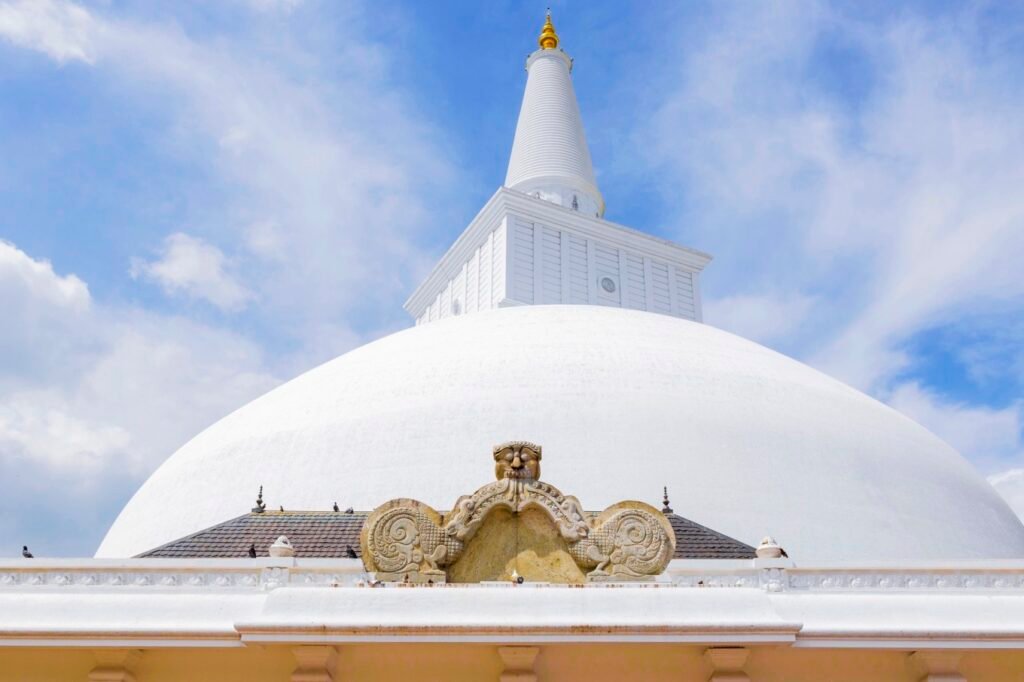
Standing beneath one of the tallest stupas in the world brings a sense of peace. The Great Stupa is located just north of the Bodhi tree and is a massive white structure. It was built by a legendary hero king from Sinhalese history and is among the tallest stupas in the world. The stupa is said to have once stood 55 meters tall and has undergone restoration by various kings throughout history. Today, it reaches a height of 107 meters with a diameter of 96 meters.
The stupa’s body is shaped like a water bubble, resting on a three-tiered base platform. At the center of the structure stands a circular stone column that tapers into a conical shape, topped with a gilded pinnacle. This stupa exemplifies the sophisticated craftsmanship of ancient Lankan Buddhist architecture and serves as a prime example of Sinhalese architectural excellence.
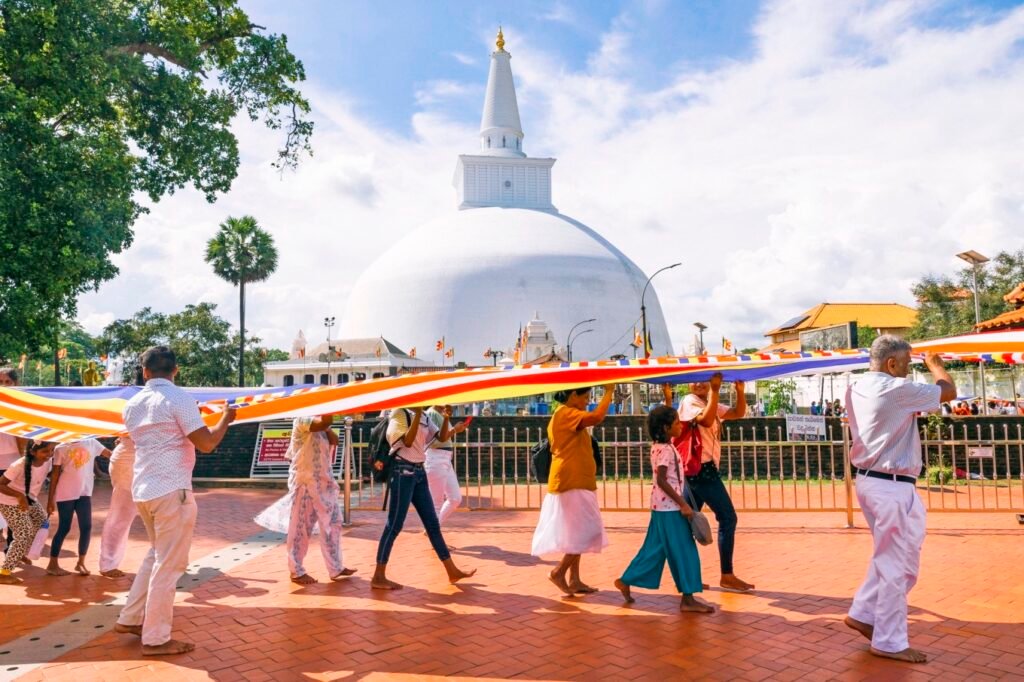
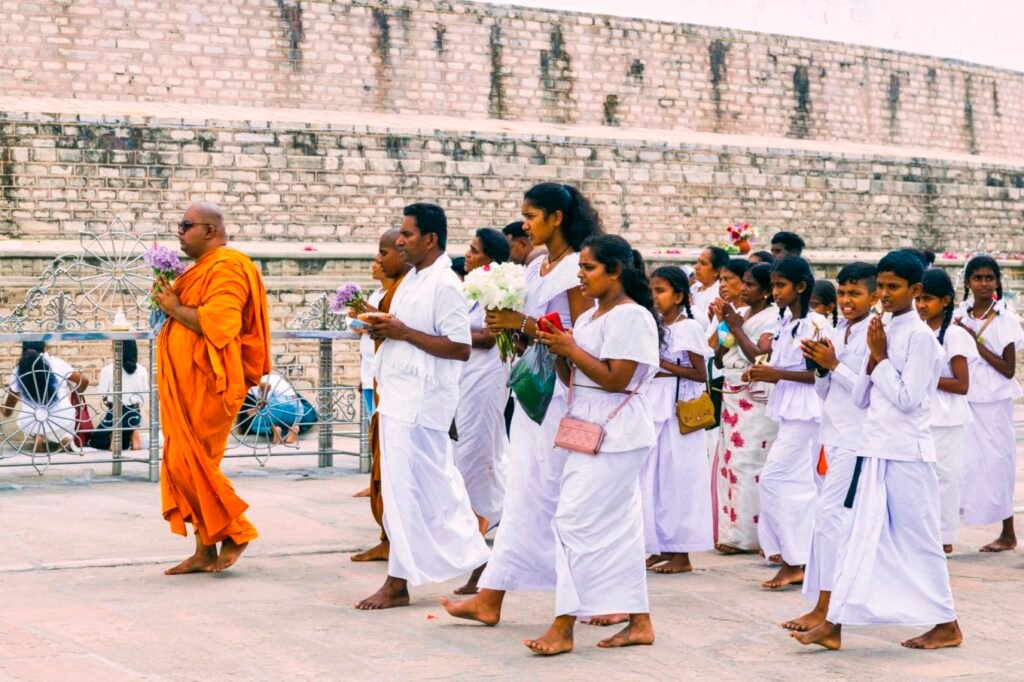
We happened to come across Sri Lankans performing a Buddhist ritual. As they passed by, they would touch the ceremonial flag with their hands. In the final part of the ritual, the flag was wrapped around the Ruwanwelisaya stupa.
2,500 years ago, Aryans from northern India migrated to the island of Ceylon and established the Sinhalese Kingdom. In 247 BCE, Emperor Ashoka of the Maurya Empire in India sent his son to the island to spread Buddhism. From then on, the Sinhalese people abandoned Brahmanism and embraced Buddhism. Around the 2nd century BCE, Tamils from southern India also began migrating to and settling on the island.
From the 5th to the 16th century, continuous warfare took place between the Sinhalese and Tamil kingdoms. In the 16th century, the island fell under the control of the Portuguese and later the Dutch. By the late 18th century, it became a British colony. On February 4, 1948, the country gained independence and was named Ceylon.
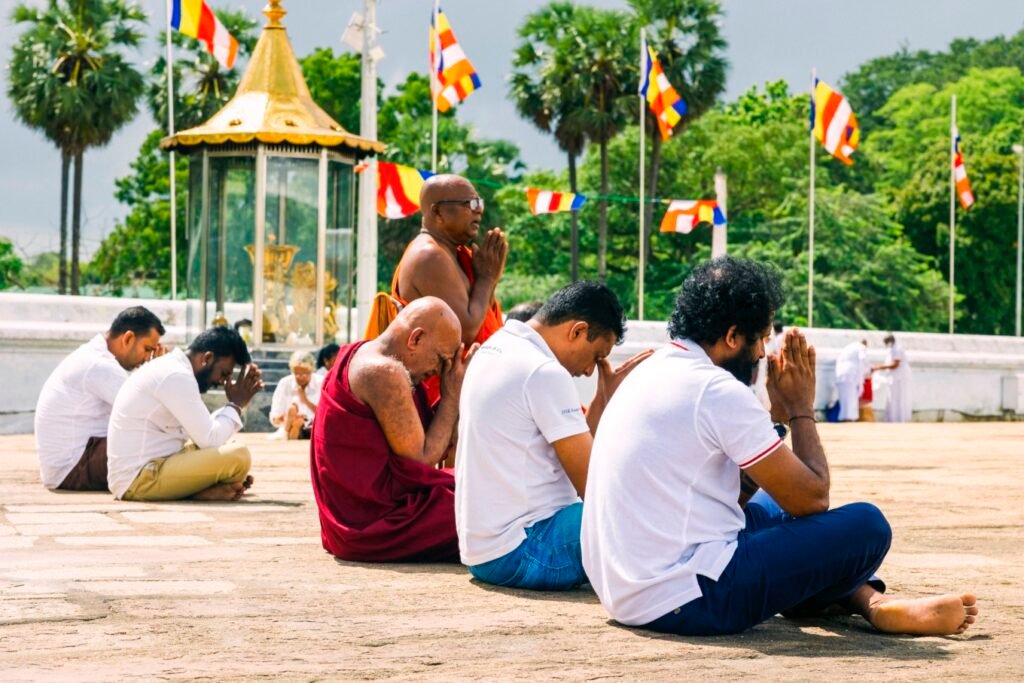

Remember that when visiting temples in Sri Lanka, you must walk barefoot as a sign of respect for the Buddha. Small stones may cause some discomfort underfoot, and while the experience is more manageable in the morning or evening, visiting in the afternoon can feel like walking on burning coals due to the heat radiating from the sun-soaked ground.
Nevertheless, it’s worth embracing this natural way of walking while in Sri Lanka. As you gradually get used to the slight prickling sensations, you may start to enjoy this intimate connection with the earth, finding a sense of relaxation and a deeper happiness that comes from feeling grounded.
In Sri Lanka, people place great importance on family and relationships. Greeting and caring for friends and relatives is an integral part of daily life. This warm atmosphere makes the people here especially friendly and welcoming, naturally expressing radiant smiles. Sri Lanka’s education system also emphasizes the development of children’s character, teaching them to respect others and greet people with a smile.
Sri Lanka boasts a rich cultural heritage, concentrated in the “Cultural Triangle,” which is formed by three ancient cities: Anuradhapura in the west, Polonnaruwa in the east, and Kandy in the central region. The ancient sites of Sigiriya and Dambulla are also included in the Cultural Triangle due to their historical significance and artistic achievements, which align closely with those of the three ancient cities.
In the forested stupa complexes of Anuradhapura, you can often spot gray langurs, also known as Hanuman langurs, white monkeys, or snow monkeys. These primates belong to the genus Semnopithecus and are the largest of the leaf monkeys. They are found in India, Nepal, Sri Lanka, and Bangladesh, and in southern Tibet in China. Typically inhabiting pine or spruce forests at altitudes between 2,000 and 3,000 meters, they are highly terrestrial, spending about 80% of their time on the ground. Their diet mainly consists of leaves and buds, though they occasionally feed on flowers and fruits.
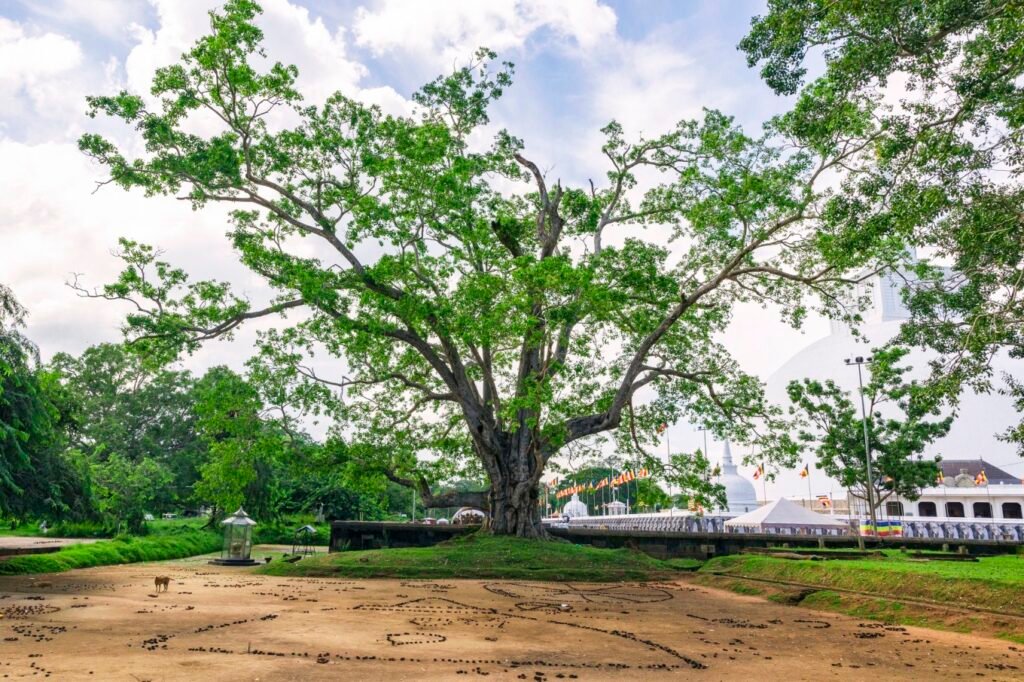
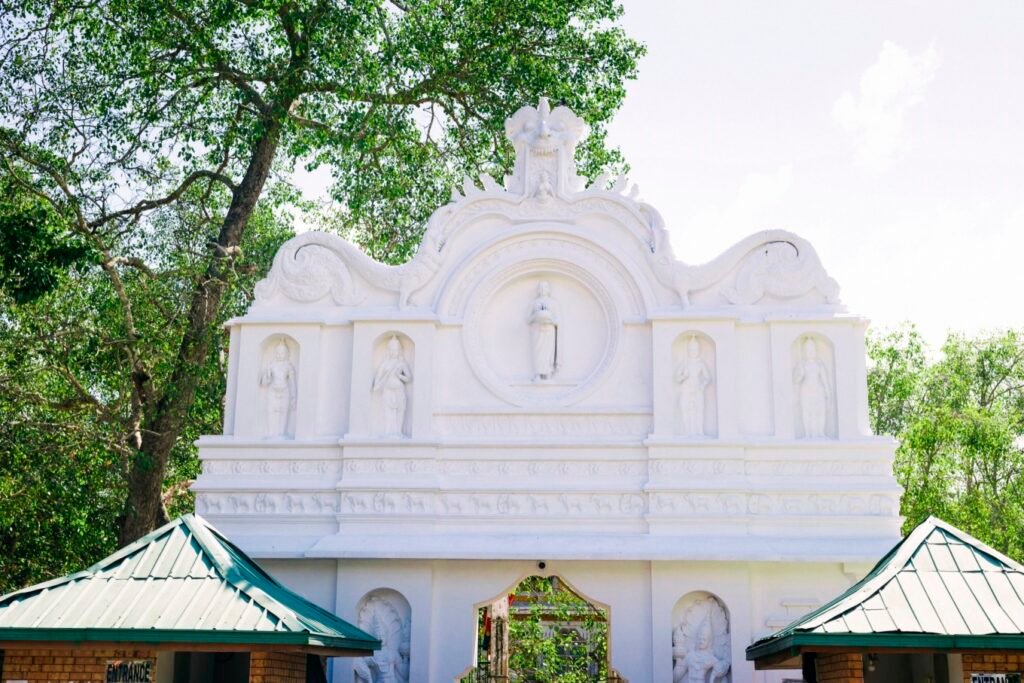
In this ancient city, the most famous attraction is the sacred Bodhi tree, which, like the Tooth Relic, is regarded as a national treasure of Sri Lanka. The Bodhi tree is a must-see. It’s not far from Ruwanwelisaya Stupa—about a 10-minute walk. Near the Bodhi tree, we saw many exquisite statues, showcasing Sri Lanka’s remarkable sculptural art. In the areas inhabited by the Sinhalese, it’s often said that “monks are everywhere, and every village has a Buddha statue.”
The most outstanding examples of Buddhist sculpture can be found in Anuradhapura, where the Samadhi Buddha statue and a bronze statue of Avalokiteshvara (the Bodhisattva of Compassion) are located. In Polonnaruwa, the Gal Vihara features three statues of the Buddha in sitting, reclining, and standing postures. The Dambulla cave temples contain hundreds of Buddha statues, collectively representing the pinnacle of Sri Lankan sculptural achievements.
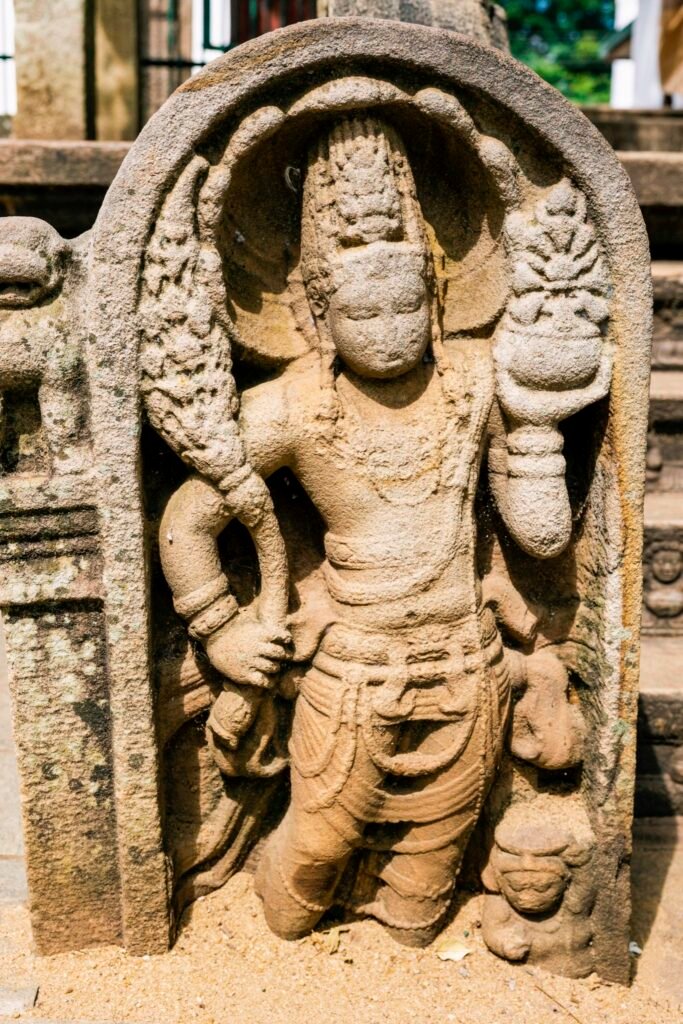
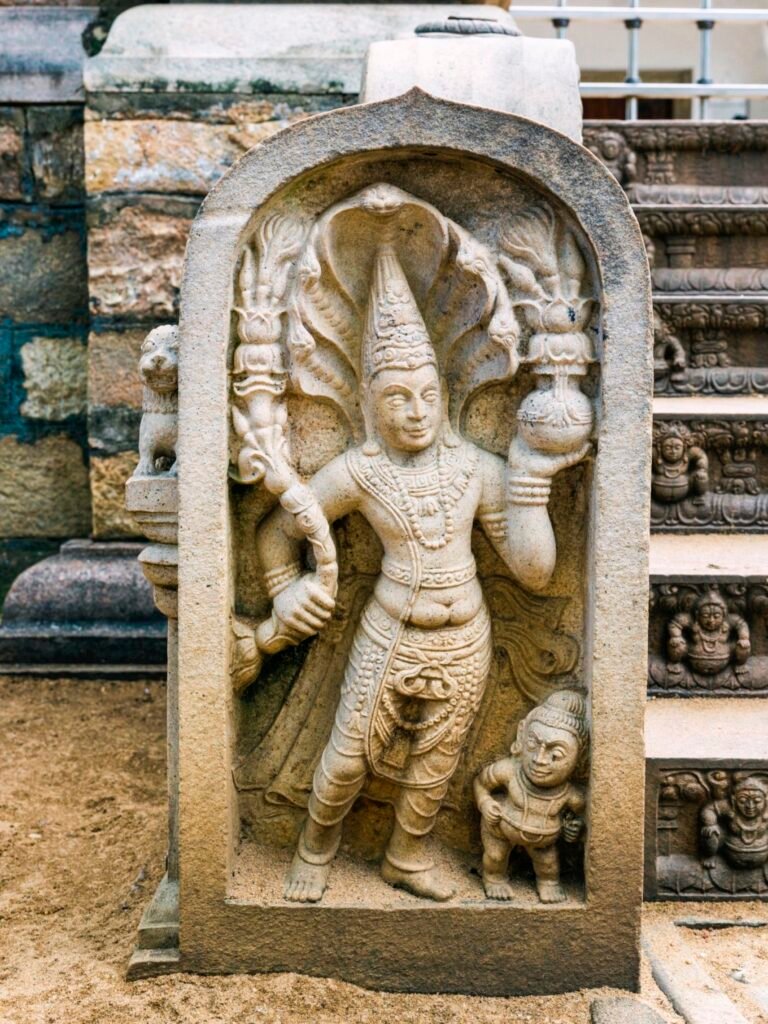
When you arrive at the Bodhi Tree Shrine, you will be deeply moved by the sight before you. The dappled shadows of the tree sway gently as people sit cross-legged on the ground, praying with heartfelt devotion. Meanwhile, stray dogs and monkeys roam freely nearby, undisturbed, embodying a true sense of equality among all living beings.
At the Bodhi Tree Shrine, you can take your time to meditate peacefully, quietly observing the devoted worshippers, or experience the spiritual power of the Buddha for yourself.
The original Bodhi tree in India has long disappeared into the currents of history. The Bodhi tree now standing in the temple is actually a descendant of the Sri Lankan Bodhi tree, currently in its sixth generation. Buddhism took deep root in Sri Lanka, growing and thriving like this sacred tree. Despite invasions and destruction by rulers of other religions, it has endured and stood firm.
What makes this tree even more precious is that after the original Bodhi tree in Bodh Gaya, where the Buddha attained enlightenment, was destroyed, a branch from the Sri Lankan Bodhi tree was transplanted back to Bodh Gaya. Therefore, the Bodhi tree in Anuradhapura is believed to be the oldest living Bodhi tree in the world. Today, this sacred tree is protected by a raised platform and fencing. Devotees come in an endless stream to worship and pray beneath it, especially on full moon days, when the platform is packed with people from all directions.

